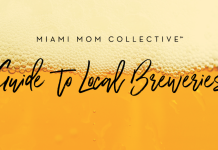This post is the 3rd in a series about my journey through feeding my baby solid food. If you haven’t already, be sure to check out Part 1 & Part 2.
Feeding My Baby Solid Food
While research does not support a specific order of solid introduction, and breastmilk/formula itself is very sweet, I offered proteins and vegetables first to prime my baby’s palate for bitter/umami-rich foods to potentially enhance acceptance of vegetables later on. (I always said my baby was dazzled by strange combinations like zucchini with bison and broccoli puree, not knowing any different, and “just happy to be here.”)
Introducing Fruits
There will be plenty of time for your baby to experience to magic of sweet fruits. Personally, if I tried mango, and then was given cauliflower, I’d be upset if you offered me cauliflower second! Babies can certainly have all manner of spices and seasonings, including a bit of salt, but be careful with anything too spicy as it may cause them to gag. We do not recommend sweeteners/artificial sweeteners of any kind for babies. (Trust me, they think plain Greek yogurt is fine.) My baby’s first “meal” was avocado and steak. Exclusively breastfed babies should also be on a daily Vitamin D supplement from the age of one month.
When I began feeding my baby solid food, I tried a few different combinations. Here are some ideas for first solid meals, whether you are practicing BLW or puree (remember appropriate chewing/choking/cooking precautions for appropriate texture!):
- Steak + avocado + sweet potato
- Beet + salmon + spinach
- Raspberries + green beans + chicken mashed with Greek yogurt
- Carrot + squash + cottage cheese
- Zucchini + kefir + chickpeas
- Oat flour + seed butter + banana
You can wet and mix foods with breastmilk or formula for enhanced nutrient intake, but be aware that calcium and iron inhibit each other’s absorption. So if you’re serving an iron-rich food— try to avoid adding milk. Iron is enhanced by the presence of Vitamin C (fruits and vegetables), so try to pair those foods. You should steam/cook foods so that they can be easily pinched between your forefingers so your baby can mash them easily with their gums and then swallow. Coaching a baby to chew and swallow throughout the process and modeling it yourself while they eat is also helpful.
Processed & Convenient Foods
“Processed” foods, like puffs/crackers, can be fun and convenient, but it is always preferable to serve your baby foods as close to their “whole and natural” form as possible with appropriate cook/texture/anti-choke safety provisions. There are tons of “baby snacks” on the market, and there is certainly a time and place for these cookies, pouches, etc. But try to use them sparingly. Babies do not need any sweeteners, artificial or natural, in their food, and again–no honey for infants under the age of 1 for botulism poisoning prevention.
I kept an Excel spreadsheet (such a dietitian) of every single food I gave/planned to give, the portion, the cooking method, what foods were served together, the reaction, and any annotations as time went on so I could have data to review. I served one food at a time eventually, and then bulked this up once I assessed tolerance to two to three foods at a time. You can choose to serve more than one food at a time from the get-go. But be aware that this would make it harder to distinguish a single culprit if there is a reaction.
This is also useful to monitor for any potential allergic reactions. Speaking of allergic reactions, it is prudent to offer new foods one at a time, and several times for a few days before declaring them “safe.” Allergic reactions can often manifest after initial exposures. If your child is at risk for food allergies, you should consider offering high-risk allergy foods in the presence of your pediatrician and consulting an immunologist for testing before starting solids.
Food Allergies: Assessing Risk
An infant is considered high risk if they have a first-degree family history of food allergies, a documented allergy, and/or have eczema. Early exposure to antibiotics may also raise the risk of food allergy. The American Academy of Pediatrics changed its position in 2008 about introducing high-risk allergenic foods because there was a lack of evidence that delaying the introduction of allergenic foods could prevent food allergies. In 2015, studies showed that introducing allergens in infancy can reduce the incidence of food allergies. We recommend that all “high risk” babies for allergies be evaluated by an immunologist before starting solid food.
Breastfeeding, vaginal births, and having pets at home are associated with lower risks of food allergies. Though a human can have an allergy to almost any food, more common food allergens are tree nuts, seeds, soy, wheat, milk, sesame, egg, peanuts, legumes, mustard, pine nuts, coconut, shellfish, and fish. Research supports early introduction (~six months, or when the baby starts solids) of allergenic foods. But always consult your pediatrician about food allergies and starting solids in general. Keep infant Zyrtec and Benadryl at home (in liquid form) and know the appropriate dose for your child’s weight. You may want to keep an infant epinephrine pen at your home as well and know how to administer it safely/train caregivers to do so.
Developing Eating Skills
As time goes on, your baby will develop their eating skills and palate at astounding speed. (It only takes months!) As long as your baby is growing and developing appropriately on their own growth curve, and intaking appropriate amounts of formula/milk, solids shouldn’t add stress to your day. They should spark joy and a high tolerance for mess. I never thought my baby would sort out how to chew avocado with no teeth without choking, but within two months of starting solids, he was ready for his own avocado tree.
Raising competent and confident eaters also involves fostering a baby’s innate gift to detect his own hunger and fullness.
Always maintain an air of neutrality while eating. Banish any digital distractions. Never chastise. Try not to be reactive. (“I see you’ve thrown your spoon. Perhaps you’re done. We can try again later. Mealtime is over!” Instead of a tantrum.) Ellyn Satter’s “Division of Responsibility” is important to consider. You do the feeding (what, when), your baby does the eating (how much, and IF they choose to eat at all).
Babies will not starve themselves, but they WILL feed off your energy and can become manipulative and cunning. You are not a short-order chef. Prepare what is on the menu and offer it. Your baby will eat eventually, and often times it can take dozens of exposures for a food to be accepted. (Infants generally are accepting; toddlers can become more finicky for a variety of reasons.) Serve a liked food with a new food for an enhanced chance of acceptance.
Never force a baby to finish their portion.
If they’re shaking their head and wincing/screaming—mealtime is over. There will ALWAYS be another opportunity for feeding. Do not jam a spoon or utensil into a baby’s mouth—they’ll potentially overfeed and zone out. Allow them to pick up their utensils and find their mouth (this may take weeks!). You can coat slippery foods with oat flour (almond flour if allergies aren’t an issue) to make them easier to grab. Also, consider using a crinkle-cut knife to texturize foods. You can serve foods on silicone plates that stick to the high chair or directly onto the high chair.
Silicone utensils are easier to gum and softer on gums for chewing versus plastic. Invest in several smocks that are long-sleeved and have a pocket to catch falling food. During mealtimes, keep it peppy and positive. Never mention calories/weight. Talk about colors, textures, tastes, smells, where food is grown and purchased. Share family stories about food, cooking, and what foods do in the body as opposed to foods being “good” or “bad.” Don’t pick at scraps of your baby’s food—that’s mindless eating.
Over time, your baby will move from one little snack per day to three “square” meals. Then eventually auxiliary snacks. Babies should continue to include high-quality full-fat dairy (like cow/goat/sheep milk [after the age of 1], yogurt, kefir, cottage cheese, and cheese) throughout their day after weaning from breastmilk/formula. All meals/snacks should include protein and plants (fruit/vegetables/legumes, etc.). Over time, you’ll raise a competent and confident eater (just like you!). But at first, it was a veritable pain in the tuchus, as my parents/grandparents would say.
I hated feeding my baby solid food at first. But what about you? What did you find particularly helpful? Share your tips and tricks in the comments below!
If you’re feeling anxious about introducing solid foods, you’re not alone! Read about how another Miami mom overcame her solid feeding fears here.

















